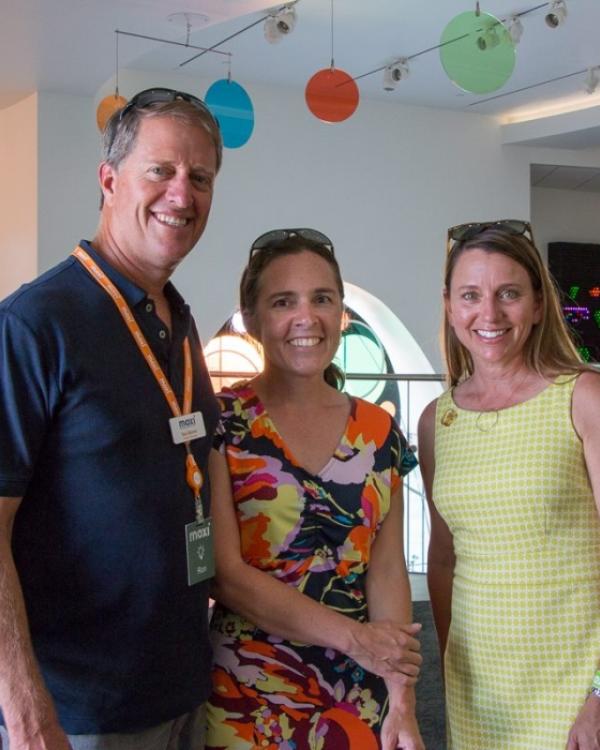
(l-r) Ron Skinner, MOXI Director of Education, the Gevirtz School's Danielle Harlow, Jody Skendarian, Girl Scouts of California's Central Coast CEO
UC Santa Barbara Gevirtz School Associate Professor Dr. Danielle Harlow wrote the curriculum for, and designed, the new Girl Scout Wolf Museum of Exploration and Innovation (MOXI) patch. This patch program provides girls and troops a fun and interesting way to engage with the exhibits at MOXI.
Sylvia Acevedo, CEO of the Girl Scouts of the United States of America, visited the Santa Barbara council and toured MOXI with local Girl Scout Troops this July. On the tour, Acevedo shared her inspiring story of growing up as a Brownie and becoming a rocket scientist.
Girl Scouts can earn the MOXI badge in a variety of ways depending on their level in the scouts, but every level must discover, connect, and take action. For example, discovery might mean learning to create sound effects in the Foley Studio by adding sound to a clip from a movie; connecting might mean finding ways that MOXI is designed to be accessible to other differences in their guests; and taking action might mean designing an activity to help another girl learn about science.
MOXI’s three floors are filled with interactive and hands-on exhibits and experiences where visitors can explore and discover new things about the world around them, ask questions, seek answers and have a blast doing so. It bills itself as, “A place where fun comes first and learning happens in active, exciting and unexpected ways.”
Danielle Harlow is an Associate Professor in the Department of Education. Her work focuses on science and engineering education for K-12 teachers and for elementary school students. She is currently part of two grants funded by the National Science Foundation. One grant focuses on developing Computer Science curriculum for upper elementary school students and studying how children learn computational thinking. The other grant focuses on how to develop undergraduate large-enrollment inquiry-based physics curricula that are aligned with the Next Generation Science Standards (NGSS). At UCSB, Harlow teaches courses for Ph.D. students, pre-service teachers, and undergraduates. Her courses include technology and learning, physics and everyday thinking, and methods for teaching elementary school science. She is also a content advisor to the Children’s Museum of Santa Barbara, a new museum that will focus on Science, Technology, Engineering, Art, and Math (STEAM), with a particular emphasis on physical science and engineering.